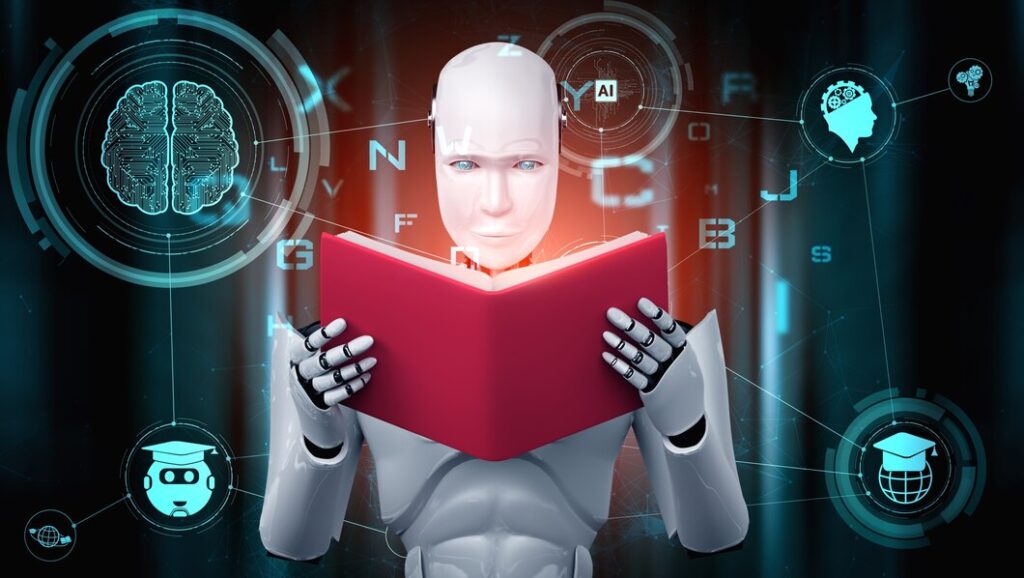
In the rapidly evolving world of artificial intelligence, the concept of an “AI to human paraphraser” is becoming increasingly relevant. This technology aims to convert AI-generated content into more human-like, relatable language, making it easier for us to connect with the message being conveyed. But what exactly does this mean, and how can it benefit us? Let’s explore this intriguing intersection of AI and human communication.
What is AI Paraphrasing?
AI paraphrasing refers to the use of artificial intelligence tools to rephrase or rewrite text while maintaining the original meaning. These tools leverage complex algorithms and vast databases to generate new sentences that reflect the same ideas but with different wording.
The Role of Natural Language Processing (NLP)
Natural Language Processing (NLP) is a subset of AI that focuses on the interaction between computers and human language. It plays a crucial role in paraphrasing by enabling machines to understand context, tone, and nuance in human speech. The better the NLP, the more accurately the AI can paraphrase text to sound like a human wrote it.
The Need for Human-Like Paraphrasing

Why Go from AI to Human?
While AI paraphrasers can generate text quickly, the output often lacks the warmth and personal touch that humans naturally include in their writing. An AI to human paraphraser is designed to bridge this gap, ensuring that the final text is not only accurate but also engaging and relatable.
Real-World Applications
Content Creation: Businesses often rely on paraphrasing tools to create fresh content from existing articles. This helps in maintaining a consistent brand voice while providing valuable information.
Academic Writing: Students and researchers use paraphrasing to avoid plagiarism and enhance the readability of their papers.
Social Media: Crafting posts that resonate with followers requires a human touch. An AI to human paraphraser can help transform standard updates into engaging content.
How Does an AI to Human Paraphraser Work?

Data Input and Analysis
The process starts with data input, where the original text is fed into the system. The AI analyzes the text for structure, vocabulary, and meaning, identifying key elements that need to be retained.
Rephrasing and Contextualization
Next, the AI generates new phrases and sentences. This is where the human-like element comes into play. The tool uses context and emotion to rewrite the text, ensuring it sounds natural. For example, a straightforward sentence like “The meeting was boring” could be paraphrased as “The meeting dragged on and felt unproductive.”
Feedback and Iteration
Some advanced AI paraphrasers incorporate feedback mechanisms. Users can rate the output, allowing the system to learn and improve over time. This iterative process helps create a more refined product that resonates with human readers.
Advantages of AI to Human Paraphrasing

Time Efficiency
Using an AI to human paraphraser saves significant time. What might take a human hours to rewrite can be done in seconds, allowing for quicker content turnaround.
Consistency in Tone
AI can maintain a consistent tone across various pieces of content, which is particularly useful for brands aiming for a cohesive voice.
Enhanced Creativity
While it may sound counterintuitive, AI can inspire creativity. By presenting new ways to phrase ideas, it can help writers overcome blocks and discover fresh perspectives.
Challenges of AI Paraphrasing
Loss of Nuance
Despite advancements, AI can sometimes miss subtle nuances in language that are critical for effective communication. This can lead to misunderstandings or a lack of emotional depth.
Over-reliance on Technology
There’s a risk that individuals may become too dependent on paraphrasing tools, potentially stifling their writing skills and creativity. Striking a balance is essential.
Best Practices for Using an AI to Human Paraphraser

Use as a Supplement, Not a Replacement
Think of AI paraphrasing tools as assistants rather than replacements. Use them to spark ideas or refine existing content, but ensure a human review for quality and tone.
Provide Clear Context
The clearer you are with your input, the better the output. Provide as much context as possible to guide the AI in generating relevant content.
Edit and Personalize
Always take the time to read through the paraphrased output. Edit for clarity and personalize it to align with your voice and message.
The evolution of AI technology continues to impact various aspects of our lives, including how we communicate. An AI to human paraphraser offers a unique solution to make AI-generated content more relatable and engaging. By leveraging these tools effectively, we can enhance our writing while maintaining the essential human touch that resonates with our audience.
FAQs About The AI to human paraphraser
What is the difference between AI paraphrasing and human paraphrasing?
AI paraphrasing uses algorithms to rewrite text, while human paraphrasing involves a person’s understanding and emotional intelligence to convey the message.
Can AI paraphrasers handle complex topics?
Yes, many advanced AI paraphrasers are designed to understand and handle complex topics, though human oversight is often recommended for nuanced subjects.
Are AI paraphrasing tools free?
Some AI paraphrasing tools offer free versions with limited features, while others require a subscription for full access to advanced capabilities.
How can I improve the output of an AI paraphraser?
Providing clear and detailed input, along with specific context, can help improve the output quality of an AI paraphraser.
Will using AI paraphrasers affect my writing skills?
While they can enhance productivity, over-reliance on AI paraphrasers may lead to stagnation in personal writing skills. It’s important to use them as supportive tools rather than crutches.
